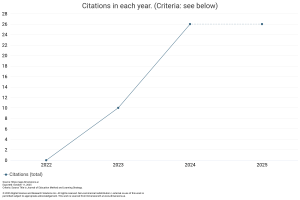Branding Strategy for Building Institution Image
Study on Madrasah Aliyah Islamiyah Senori Tuban
DOI:
https://doi.org/10.59653/jemls.v3i02.1573Keywords:
Branding, strategy, Madrasah ImageAbstract
Fierce competition in the education sector requires madrasas to build a positive image of madrasas through effective branding strategies in increasing public trust. As an educational institution Madrasah Aliyah Al Islamiyah Senori Tuban Regency plays an important role in introducing and promoting the name of the madrasah. Madrasah Aliyah Al Islamiyah Senori Tuban Regency implements a branding strategy to improve the image of the institution. This study uses a qualitative approach with a field study approach. The research method uses observation, documentation, and in-depth interviews. Miles and Huberman's interactive analysis is used for data analysis, which includes data condensation activities, data appearance, drawing conclusions, or data verification. The results of this study show that (1) MAIS builds a branding strategy in improving the image of the institution through cost, differentiation, and focus leadership strategies. (2) supporting factors in building branding in improving the image of the MAI Senori institution include management commitment, academic and non-academic achievements, and community support. (3) The inhibiting factor is the limitation of modern facilities and teaching staff with digital competence.
Downloads
References
Alawiyah, F. (2014). Pendidikan madrasah di Indonesia. Aspirasi: Jurnal Masalah-Masalah Sosial, 5(1), 51-58.
Alwi, B. M. (2013). Pondok pesantren: Ciri khas, perkembangan, dan sistem pendidikannya. Lentera Pendidikan: Jurnal Ilmu Tarbiyah dan Keguruan, 16(2), 205-219.
Arbangki, D., Umiarso. (2016). Manajemen mutu pendidikan. Jakarta: Prenadamedia.
Cheng, A., Trivitt, J., & Wolf, P. J. (2015). School choice and the branding of Milwaukee private schools. Journal of EDRE Working Paper, (4).
Creswell, J. W. (2010). Research design: Pendekatan kualitatif, kuantitatif, dan mixed. Yogyakarta: PT Pustaka Pelajar.
Gajic, J. (2012). Importance of marketing mix in higher education institutions. Singidunum Journal, 29-41.
Ismuratno, I., Hamdani, M. K., & Prahastiwi, E. D. (2021). Implementasi strategi pemasaran jasa pendidikan di Lembaga Sekolah Dasar Islam Insan Cendekia Pacitan. Kreatif: Jurnal Pemikiran Pendidikan Agama Islam, 19(1), 16-29.
Išoraitė, M. (2018). Brand image development. Ecoforum, 7(1), 14.
Jefkins, F. (2003). Public relations. Jakarta: Penerbit Erlangga.
Juhji. (2020). Manajemen Humas Sekolah. Bandung: Widina Bhakti Persada.
Kartajaya, H. (2007). On Brand Seri 9 Elemen Marketing. Bandung: Mizan.
Kurniati, D., & Hakim, L. (2023). Strategi lembaga pendidikan Islam dalam menghadapi standar operasional pendidikan (Studi di MTsN 3 Tulungagung, Jambi). Al-Zayn: Jurnal Ilmu Sosial & Hukum, 1(1), 83-98.
Mulyasa, E., & Aryani, W. D. (2022). Implementasi sistem penjaminan mutu internal di era merdeka belajar. Aksara: Jurnal Ilmu Pendidikan Nonformal, 8(2), 933-944.
Mundiri, A. (2016). Strategi lembaga pendidikan Islam dalam membangun branding image pedagogik. Jurnal Pendidikan, 3(2), 58-72.
Moore, F. (2005). Humas membangun citra dengan komunikasi. Bandung: PT Remaja Rosdakarya.
Riezebos, R., et al. (2003). Brand management: A theoretical and practical approach. Groningen: Financial Times Prentice.
Sadat, A. (2009). Brand belief: Identifikasi kepemilikan sebelum merek berbasis keyakinan. Jakarta: Salemba Empat.
Secundo, G. (2010). Intangible asset in higher education and research: Mission, performance or both? Journal of Intellectual Capital, 14(0), 157.
Servier, R. A. (2000). Brand as relevance. Recruiting and Development Publication. Cedar Rapids: IA: Stamats Communication, Inc.
Sholeh, M. I. (2023). Menghadapi persaingan sengit lembaga pendidikan: Strategi diferensiasi dalam pemasaran lembaga pendidikan Islam di Indonesia. AKSI: Jurnal Manajemen Pendidikan Islam, 1(3), 192-222.
Siregar, I., dkk. (2024). Dampak transformasi digital terhadap prestasi kerja dan keunggulan bersaing di sekolah berbasis Islam terpadu. Jurnal Review Pendidikan Dan Pengajaran (JRPP), 7(3), 8644-8655.
Sugiyono. (2016). Metode Penelitian Kuantitatif, Kualitatif dan R&D. Bandung: Alfabeta.
Sukhoiri, S. (2022). Sekolah Islam Terpadu: Reformasi baru lembaga pendidikan Islam di Indonesia. Jurnal Pendidikan Indonesia: Teori, Penelitian, dan Inovasi, 2(5).
Sukmadinata. (2016). Metode Penelitian Pendidikan. Bandung: PT Remaja Rosdakarya.
Suliyah, S. (2024). Manajemen Humas Di Lembaga Pendidikan Islam. Penerbit Tahta Media.
Susanto, H. W. (2004). Power building (Membangun merek unggul dan organisasi pendukungnya). Jakarta: Mizan Publika.
Susilawati, I. M., & Harun, M. (2017). Analisis SWOT sebagai dasar strategi branding pada Madrasah Ibtidaiyah Alhidayah, Cireunde, Ciputat. Tarbawi: Jurnal Keilmuan Manajemen Pendidikan, 3(1), 111-128.
Syafiq, M. A., dkk. (2024). Inovasi manajemen pendidikan Islam dalam menghadapi tantangan modern. Philosophiamundi, 2(3).
Downloads
Published
How to Cite
Issue
Section
License
Copyright (c) 2025 Ni'mal Chala, Agus Eko Sujianto, Sulistyorini

This work is licensed under a Creative Commons Attribution-ShareAlike 4.0 International License.
Authors who publish with this journal agree to the following terms:
- Authors retain copyright and grant the journal right of first publication with the work simultaneously licensed under a Creative Commons Attribution-ShareAlike that allows others to share the work with an acknowledgement of the work's authorship and initial publication in this journal.
- Authors are able to enter into separate, additional contractual arrangements for the non-exclusive distribution of the journal's published version of the work (e.g., post it to an institutional repository or publish it in a book), with an acknowledgement of its initial publication in this journal.
- Authors are permitted and encouraged to post their work online (e.g., in institutional repositories or on their website) prior to and during the submission process, as it can lead to productive exchanges, as well as earlier and greater citation of published work (See The Effect of Open Access).
























